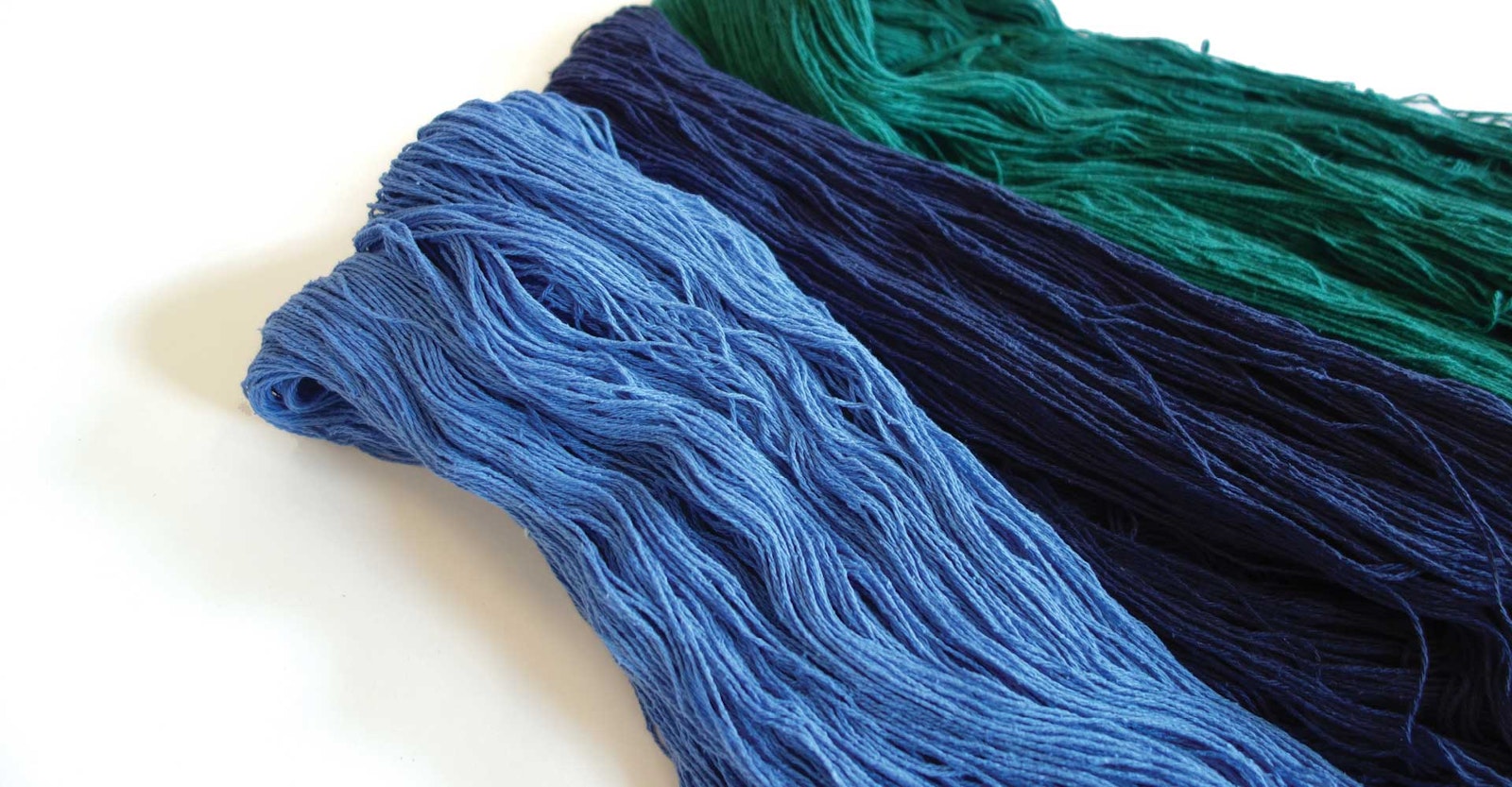THE YARN: GIST Italian Silk Noil
1,450 yd/lb; about 575 yd/6 oz skein (skeins vary in weight); 100% silk noil.
GIST Italian Silk Noil is a thick three-ply yarn with a gentle twist that invites the use of color and texture in weaving. The yarn is relatively soft—it can be pulled apart by hand—and comes in 11 different colors. When weaving with Texsolv heddles, there was no breakage or abrasion. When weaving with metal heddles, one end did abrade; however, I trimmed the broken ply and wove to the end of the project (over 70 inches) with no effect on appearance.
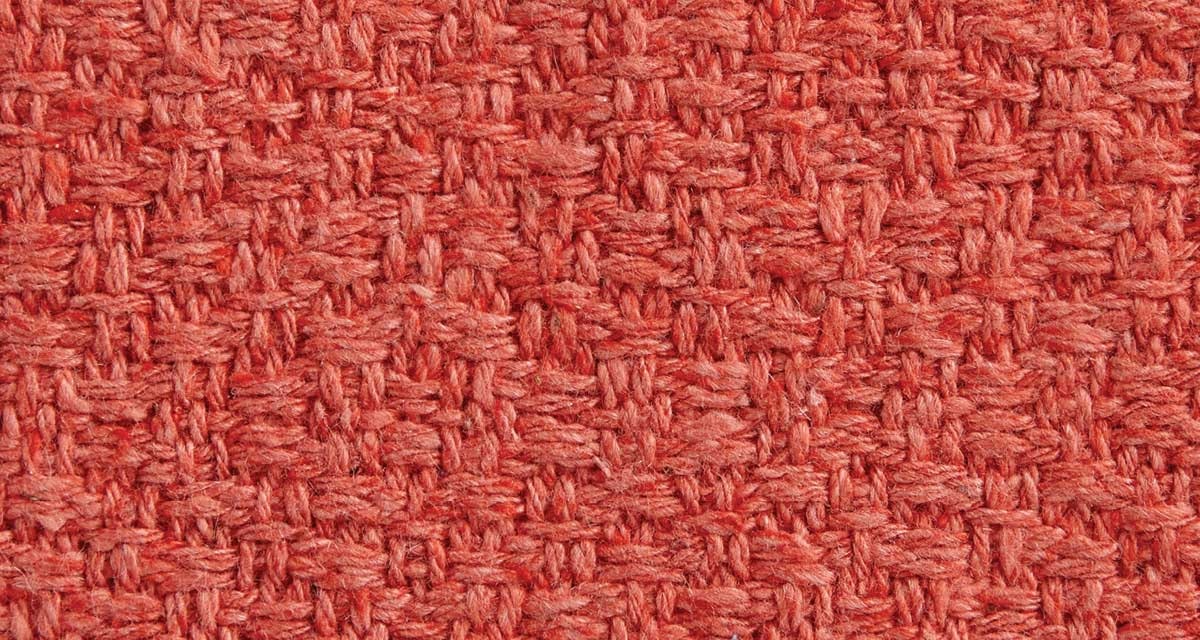
Sample 1: Advancing 2/2 Twill
SAMPLE 1: Advancing 2/2 Twill
Sample Yarns: Warp and weft: Cherry.
To begin my adventure in weaving with a thick silk yarn, I chose a pattern that would provide texture and possibly a glimpse of the chosen pattern. In the sample shown, sett at 15 ends per inch (epi), the texture is the primary characteristic and the pattern isn’t quite visible. Adding a second color would provide both pattern and texture. The cloth is appropriate for a warm, soft scarf or shawl.
Setts: 15 epi; 16 ppi.
Shrinkage in length: 12%.
Shrinkage in width: 10%.
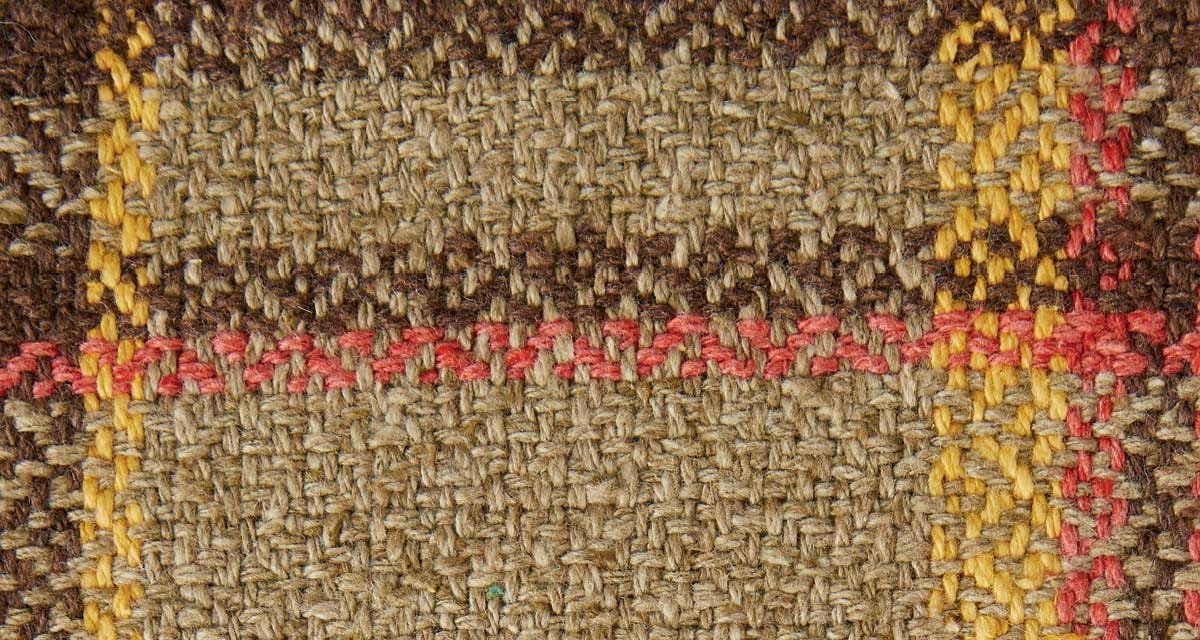
Sample 2: Broken Twill
SAMPLE 2: Broken Twill
Sample Yarns: Warp and weft: Sage, Coffee, Cherry, and Sunflower.
I chose another twill for my second sample, but this time I used contrasting colors to highlight the otherwise hidden pattern. A sett of 15 epi once again worked best for a soft textured feel appropriate for scarves or shawls or, in my opinion, a top or vest. In another sample with this warp, I used GIST’s Italian cotton/linen yarn for the weft and found the fabric to be wonderful—pliable with a touch of crispness provided by the linen—quite nice for a lightweight fabric, although a sett of 18–20 epi would produce a cloth even more well suited for summery clothing.
Setts: 15 epi; 16 ppi.
Shrinkage in length: 10%.
Shrinkage in width: 8%.
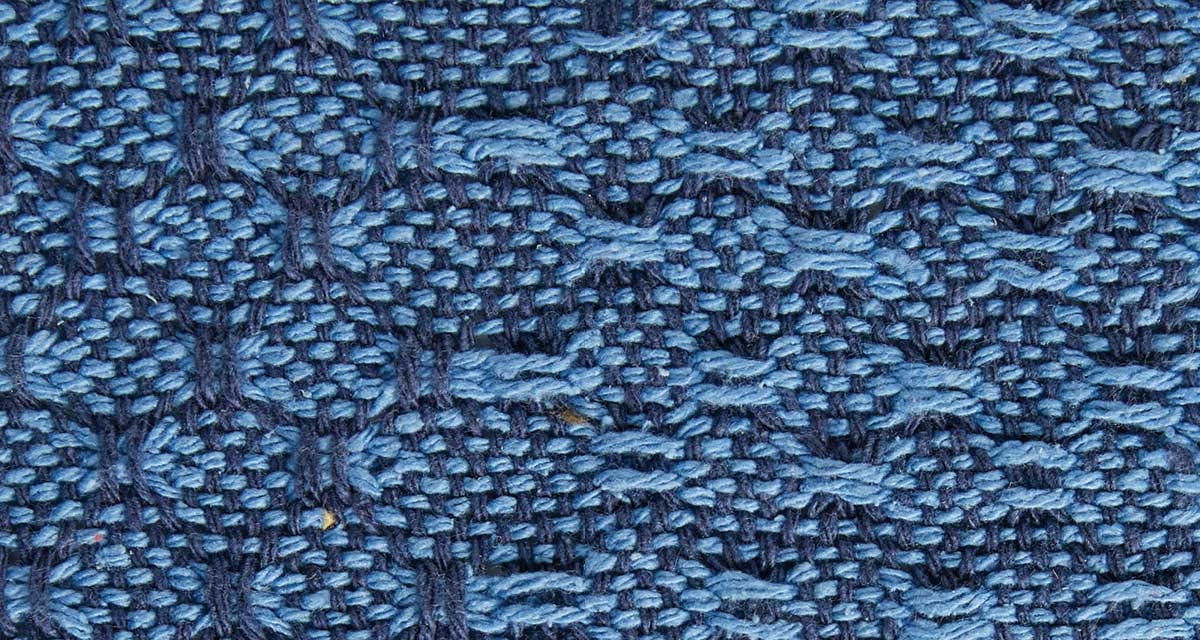
Sample 3: Huck Lace
SAMPLE 3: Huck Lace
Sample Yarns: Warp: Denim, Weft: Midnight.
I was curious to see how this yarn would work with one of my favorite weave structures, huck lace. Sett at 15 epi and beat at 16 ppi, the result is a supple, lightweight fabric perfect for a scarf or shawl. A second sample, using cotton/linen yarn for the weft, produced a slightly crisp handsome cloth. Both weaves would benefit from a closer sett and beat to produce a fabric that is still pretty but with shorter floats.
Setts: 15 epi; 16 ppi.
Shrinkage in length: 12%.
Shrinkage in width: 4%.
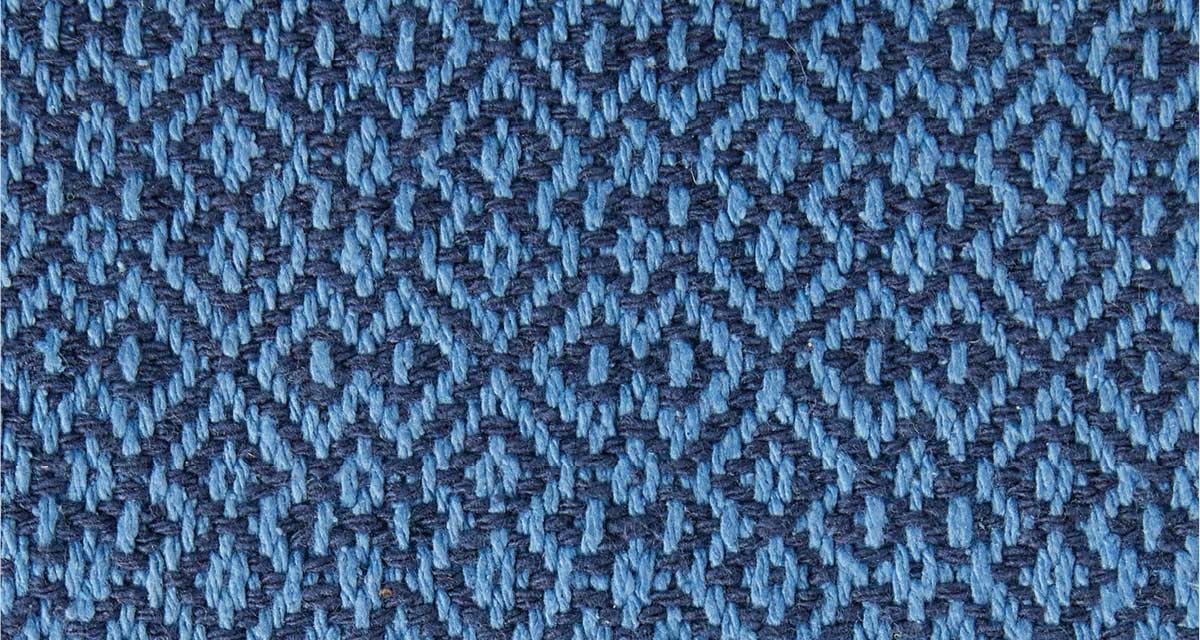
Sample 4: Twill Variation
SAMPLE 4: Twill Variation
Sample Yarns: Warp: Denim, Weft: Midnight.
To highlight pattern and drape, I wove a twill pattern, but this time I used a sett of 20 epi and aimed for a balanced weave. The fabric is pleasing to the eye and has an easy yet secure hand. It could be used for scarves or perhaps as fabric for a blouse. With a closer sett and beat, it could be used for purses and jackets.
Setts: 20 epi; 21 ppi.
Shrinkage in length: 11%.
Shrinkage in width: 3%.
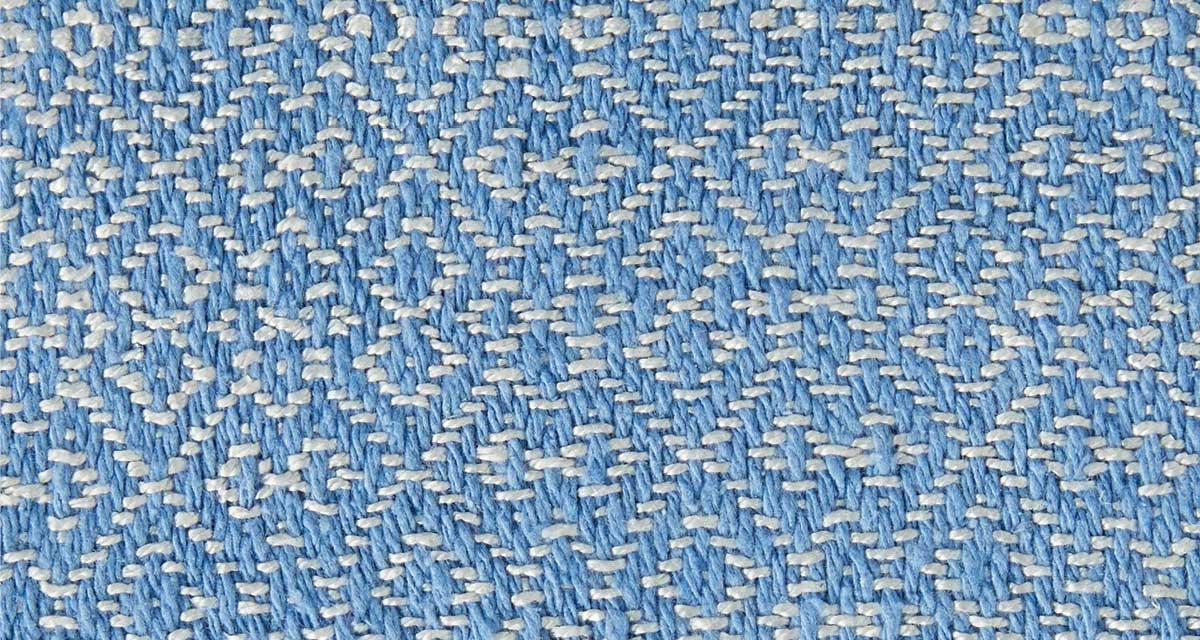
Sample 5: Twill Variation
SAMPLE 5: Twill Variation
Sample Yarns: Warp: Denim, Weft: 10/2 bombyx silk, white (Treenway Silks).
I wove this sample on the same warp as Sample 4. The combination of silk noil and spun silk highlights properties of both: the pliability and warmth of the silk noil and the lustrous shine of spun silk. The drape of the fabric is wonderful. This combination will be repeated on my loom.
Setts: 20 epi; 20 ppi.
Shrinkage in length: 10%.
Shrinkage in width: 6%.
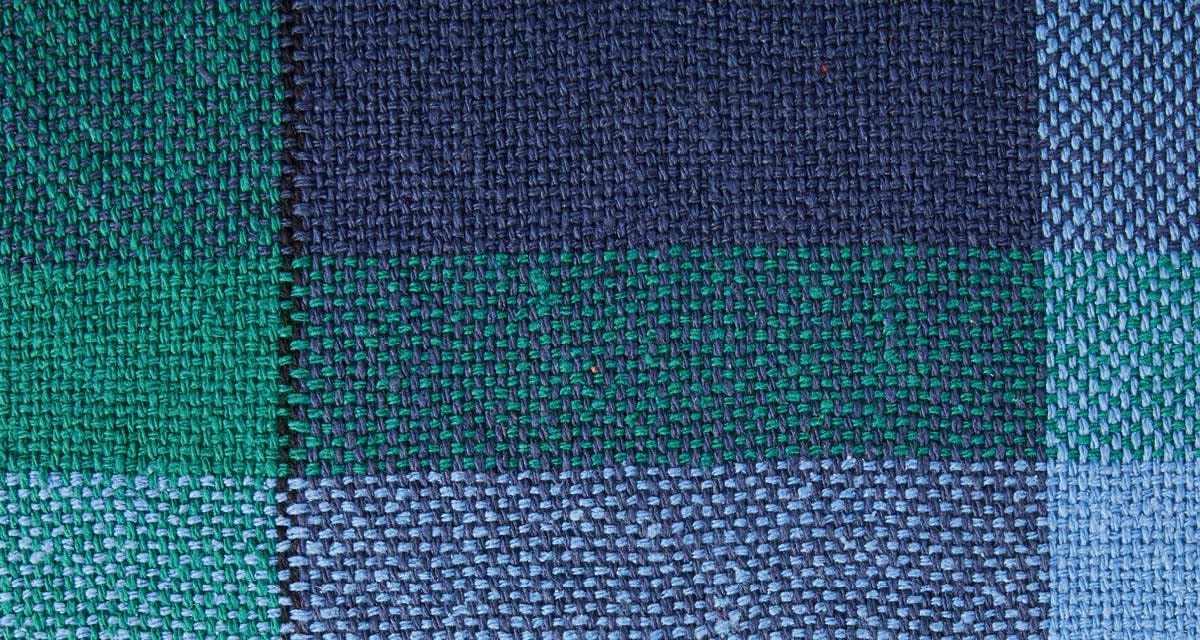
Sample 6
SAMPLE 6: Plain weave
Sample Yarns: Warp and Weft: Denim, Midnight, and Emerald.
I wove three versions of plain weave at three different setts. The version shown here sett at 15 epi has a lovely drape and would work well for a scarf or shawl. It is light and supple with nice blending of color—bold and subtle at the same time. I wove another version at 10 epi, which made an open, airy, thin cloth. The interlacement is very nice. I sett the last plain-weave sample at 20 epi, and with a firm beat, I managed nearly 20 ppi. Cloth at this sett could be used for a vest, top, or light jacket, or even a purse or bag.
Setts: 15 epi; 14 ppi.
Shrinkage in length: 13%.
Shrinkage in width: 10%.
Final Thoughts
Challenges come to us in myriad ways. Mine, with GIST’s silk noil, was shifting from my usual focus on using fine silks. I learned a lot: I could weave within a week of beginning to dress the loom—and make clear progress in just one day! Most appealing to me is the range of fabrics that can be produced, all with the gentle softness of silk. The suppleness and drape vary depending upon the weave structure or the combination of yarns (linen, spun silk). There are newly purchased skeins of these yarns in my stash now, and I will use them happily.

